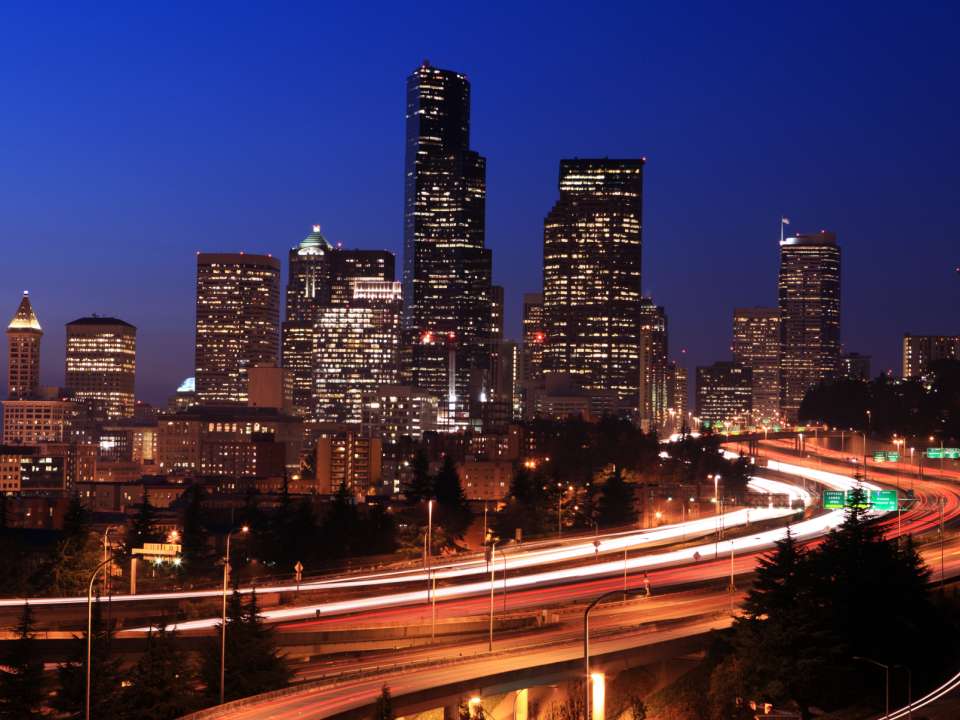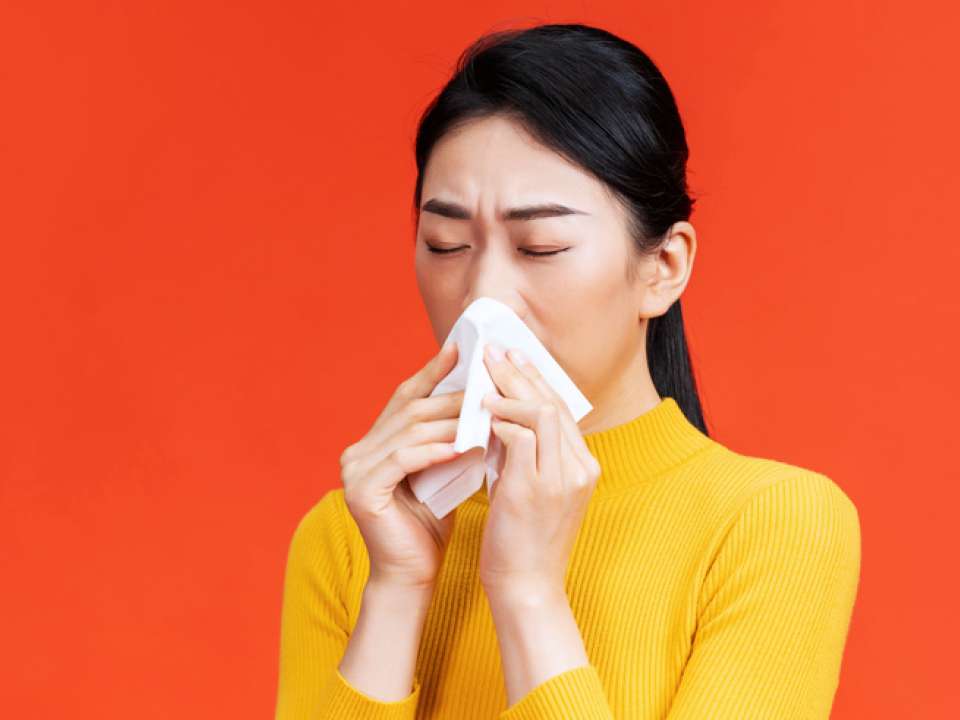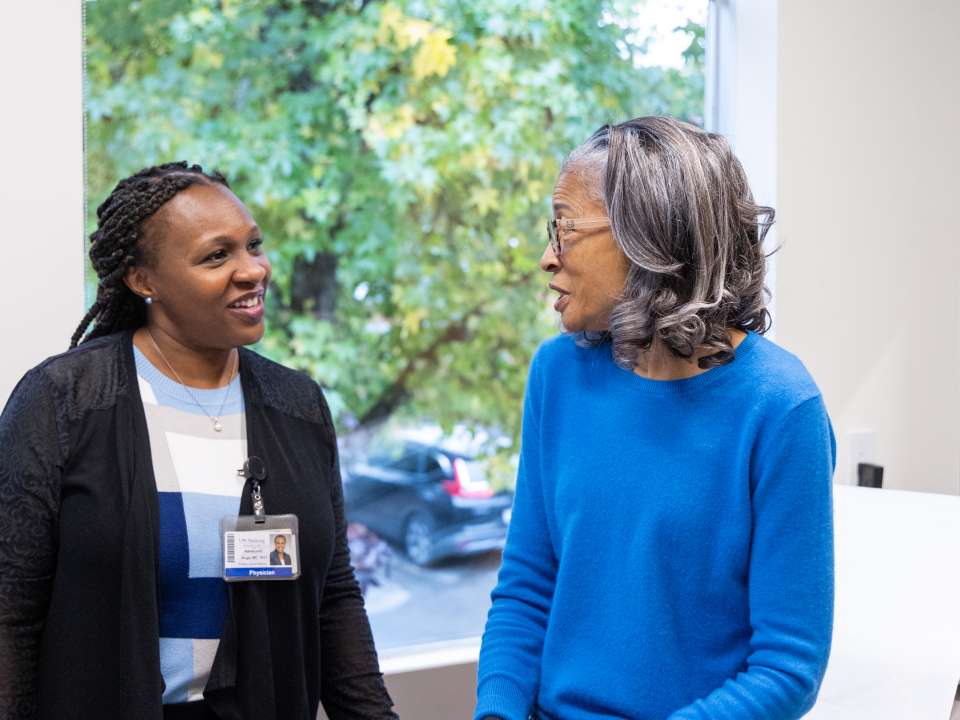
In the past year, we’ve seen wildfires up and down the West Coast, hurricanes inundating the Southeast and a rise in heat across the nation and around the globe.
While many of us want to help, it can be hard to know how to move the needle on climate change.
Learn how the environment affects your health and what we can all do to help keep the planet and each other safe and healthy.
What is climate change?
“We often think of climate change and global warming interchangeably. The definition of global warming is the change to the global mean temperature, which is increasing,” says Becky Alexander, a professor of atmospheric sciences and director of the program on climate change at the University of Washington.
Climate change is the result of this increase in global temperature. It includes the various changes in local climates, such as the effects on precipitation, temperature and wind patterns.
Alexander explains that the average global temperature has increased just over 2 degrees Fahrenheit (1.2 degrees Celsius) since the Industrial Revolution and is continuing to go up.
“It’s abstract because we don’t live in the global mean temperature. The change seems almost insignificant at 1 or 2 degrees Celsius, but what seems like a small change in the global mean temperature can have huge impacts locally,” Alexander says.
In other words, global warming is the increase in temperature happening at the planet level, while climate change represents the downstream effects that we see in our communities. And both global warming and climate change pose serious threats to our health and the health of the planet.
What changes in climate are occurring now?
Climate change is occurring in large part due to increasing amounts of carbon dioxide (CO2) and other greenhouse gases, which are produced through human actions like agricultural practices, transportation methods and the burning of fossil fuels like coal and oil.
“Climate change is no longer a distant threat,” Alexander says. “It’s happening now.”
Here are three things you need to know about climate change.
More frequent and extreme weather events
Greenhouse gases like CO2 are trapping in heat and increasing the average temperatures on Earth. In fact, a NASA analysis found 2020 tied with 2016 for the hottest year on record.
“As we add greenhouse gases to the atmosphere, more of the sun’s energy is retained, adding thermal energy to the climate system,” explains Dr. Jeremy Hess, a physician at Harborview Medical Center and co-author of the 2020 Lancet Countdown on Health and Policy Change U.S. Policy Brief.
This increase in thermal energy speeds up the water cycle, the process through which water evaporates into the air and then precipitates (rains) back down to Earth’s surface.
Hess compares this effect to turning up the heat on a pot of water simmering on the stove — the higher the heat, the faster the water changes.
Ultimately, all this energy and heat leads to more frequent and severe weather events like extreme droughts or flooding, depending on where you live. It also contributes to hurricanes, tornadoes and — as many of us Pacific Northwesterners experienced this past year — wildfires.
Snow and ice melt
Along with affecting the weather, increased temperatures cause Earth’s surface to warm up.
The more heat, the more likely it is for glaciers and sea ice to melt and the less likely there is to be snowfall.
In Washington and the Northwest, the volume of snow in mountainous areas, called snowpack, decreased roughly 23% from 1955 to 2016, an amount that can affect agriculture and local wildlife like salmon. In the U.S., glaciers are shrinking, lake ice is thawing faster and, in most parts of the country, snowfall has decreased.
It’s also a positive feedback loop. The increased temperature melts the snow and ice, and without snow and ice to reflect the sun’s rays (snow’s light color allows it to reflect 80-90% of the sun’s energy back into the atmosphere), the Earth’s surface heats up and melts more snow and ice.
As glaciers and snow cover shrink, sea levels rise, and we become more vulnerable to extreme storms.
Ocean acidification and higher sea level
As the amount of carbon dioxide in the atmosphere increases, so too does the amount that dissolves into the ocean.
When carbon dioxide dissolves into seawater (think the air bubbles dispersing into your sparkling water), it makes the water more acidic, a process called ocean acidification. Currently, this increase in ocean acidity is dissolving the shells and skeletons of marine organisms like oysters and corals.
“This has local impacts on shellfish growers, because shellfish don’t grow as well in acidic environment,” Alexander says.
The higher temperatures also affect the ocean, which absorbs the heat and expands. As it does, the sea level rises — meaning more coastal flooding and loss of coastline, including the Pacific Coast.
How does climate change affect our health?
While it’s easy to see how an extreme event like a wildfire can harm someone’s health, less obvious changes in climate can be just as dangerous.
For example, worsening pollen levels, insect-borne diseases, changes in precipitation and air pollution are all results of climate change that can cause disease, mental health problems and even death.
These effects of climate change also compound on one another.
“People are already seeing that there are more surprise extremes and importantly more connected extremes, some created by our responses to rapidly changing circumstances,” Hess says. “We are seeing drought connected with wildfire connected with a heat wave connected with population displacement connected with power outages.”
If that wasn’t concerning enough, Hess, along with other UW Medicine and local health experts found that environmental health risks disproportionally affect people of color and people experiencing poverty.
“There is huge variability in Washington around these disparities,” Hess says. “The communities that are most highly impacted currently are the ones on the frontlines with climate change as well.”
In short, climate change exacerbates healthcare inequity by disproportionately affecting communities already experiencing unjust policies and healthcare practices. As one example, people of color and people with lower incomes are more likely to live in the hottest neighborhoods than their white and/or affluent counterparts. Subsequently, these minority communities are at a higher risk for heat-related illness.
“We can’t separate environmental justice and social justice from efforts to mitigate climate change,” Alexander says. “To really have a positive effect on climate and society, we have to do it in a way that helps everybody and doesn’t help some people at the expense of others. Only in that way are we going to create lasting change.”
What can we do to decrease climate change and bolster health?
Thinking about climate change can feel bleak. But the fact that our health and the health of the planet are inextricably tied together also offers a glimmer of hope: in aiding one we bolster the other.
“It’s a theme we see again and again, a lot of the things that are better for the planet are good for you, too,” Hess says.
Changing our habits to mitigate the harms of climate change requires work, but each decision makes a difference — even the imperfect ones.
“Not all of these options are available to people for various reasons, such as the cost of alternative modes of transportation or dietary restrictions,” Hess says. “It’s hard to always do the right and virtuous thing, but it’s important to understand that your choices have an impact.”
Here are ways to both mitigate harm to the climate and protect yourself from climate-based health hazards.
Eat sustainably
In a nutshell, eating sustainably is about consuming food that is good for you and the environment.
Foods like beef require more fuel and energy to produce, and therefore have a higher cost to the environment.
Reducing the amount of meat you eat (hello, Meatless Monday) or swapping for a plant-based diet can improve your heart health and reduce the amount of energy required to produce your meals.
Choose low- or no-emission transportation
Cars, planes and other modes of transportation that burn fossil fuels emit CO2 and other greenhouse gases.
You can lessen your travel-related carbon emissions by flying less or taking a train instead of a plane, driving an electric or hybrid vehicle and opting to walk or bike instead of drive, Hess notes.
On a national level, moving to a zero-emission transportation system will save thousands of lives, prevent tens of thousands of asthma attacks and generate billions of dollars in health and climate benefits.
As for you and your family’s well-being, shifting from car travel to walking or biking when possible gives your health a boost, from better endurance to lower blood pressure.
Prepare for extreme weather events
Be it creating an emergency kit, installing an air purifier or installing air conditioning, Hess recommends taking steps to prepare for extreme weather events.
Make sure your loved ones know how to contact each other in case of an emergency and plan a place to meet once it’s safe to do so.
“Take it seriously when people tell you what you need to do for a natural disaster. The risk of those things is becoming clearer and greater,” Hess says.
For those who have the means to do so, preparing for a disaster provides a safety net. For many people, however, prepping for evacuation and disaster-proofing a house is expensive and otherwise not accessible. This is why it’s crucial to make changes and preparations at a societal level.
Talk about climate change
The more we discuss climate change in our families, friend groups and communities, the more it will become a national priority.
“People don’t talk very much about climate change because it’s become politicized, but it’s inherently not a political issue,” Alexander says.
You can help normalize talking about climate change by discussing it with the people in your circle. By doing so, you are helping frame climate change as more than just a topic covered in the news, but a crisis that affects real people and that has real stakes for you and your community.
Advocate for policy change
“It’s important to encourage our public health leaders and leaders generally to take climate change seriously,” Hess says. “Change starts at home. Learn about UW’s Sustainability Initiative and Climate Action Plan, and take action in your own life and workplace to reduce emissions and increase resilience.”
From the local to the national level, policy change is one of the most effective ways to encourage a reduction of carbon emissions, strengthen the healthcare system and mitigate the harms of climate change.
To get involved, learn more about climate change, join local advocacy groups, push your workplace to support ambitious change, contact your elected officials and vote with climate change in mind.
The bottom line
The dangers of climate change are real, but we have the ability to mitigate harm to the environment and ourselves.
“There’s a lot of opportunity in reducing greenhouse gas emissions and adapting to climate change,” Hess says.
In the Pacific Northwest, Hess notes that climate change brings the opportunity for innovation for key industries like aerospace and agriculture and could even bolster Washington businesses.
Ultimately, the more we prioritize healthy environmental practices, the healthier we will be as individuals — and that’s a future to look forward to.

 Healthy ideas for your inbox
Healthy ideas for your inbox





